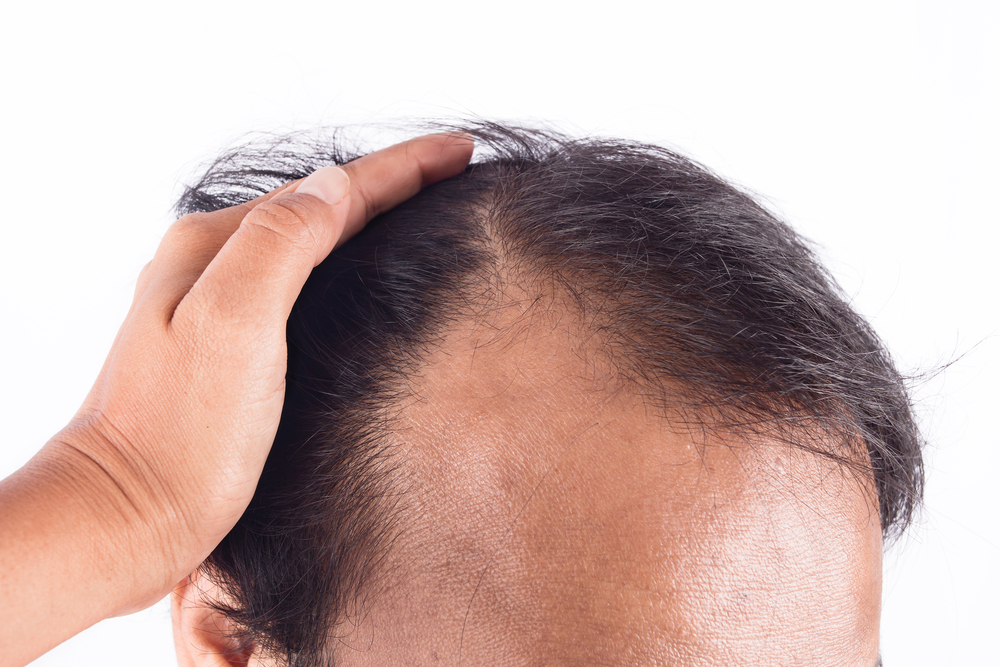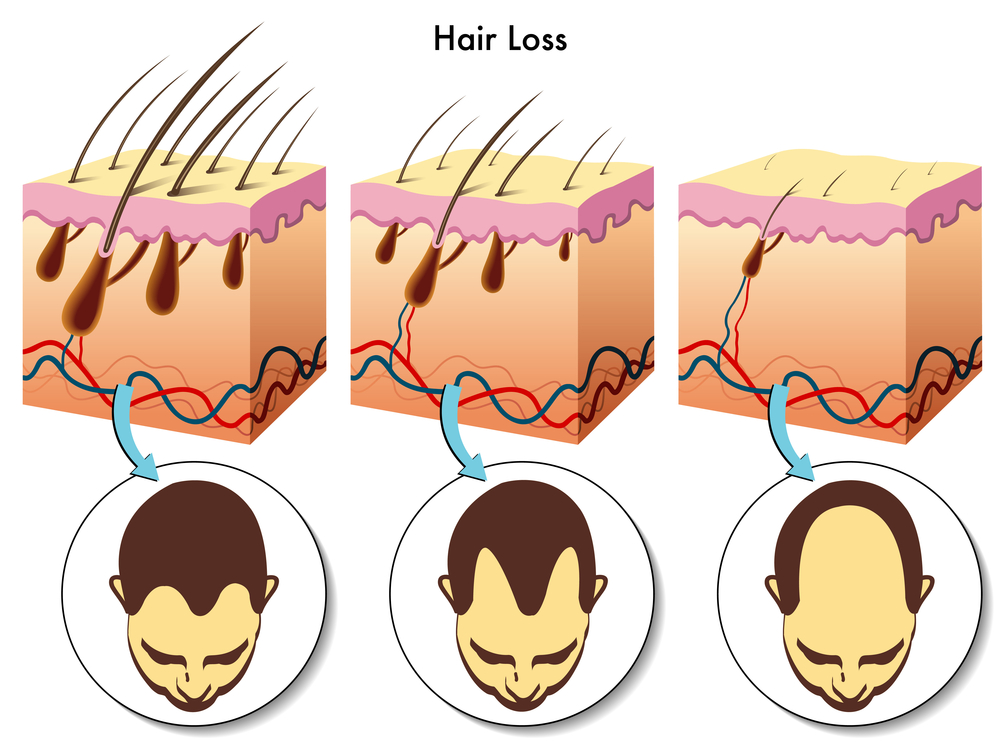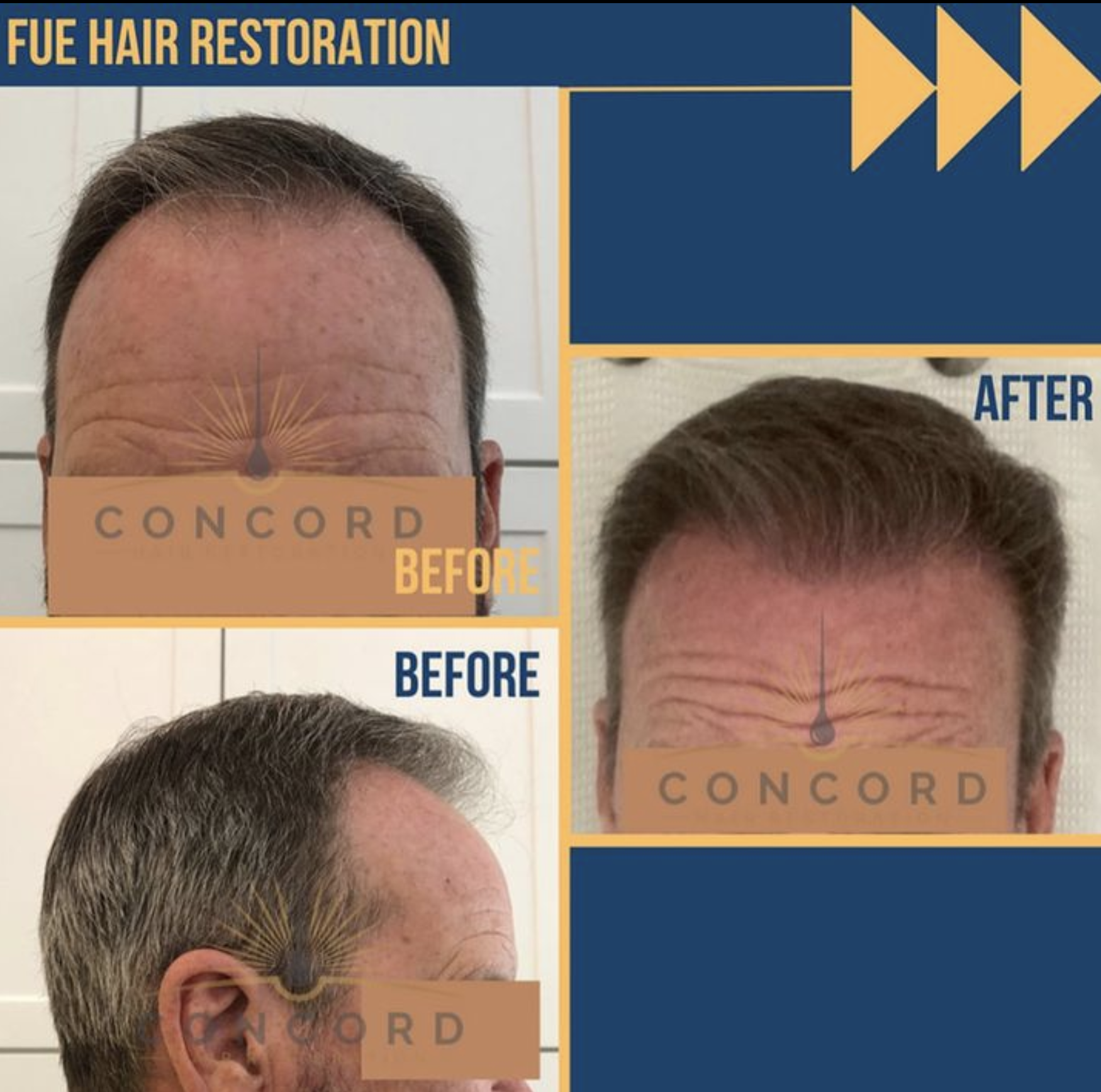Understanding Male Pattern Baldness
Causes, Treatments, and Taking Control
Hair loss is a common concern for men, and male pattern baldness is the most frequent culprit. It can affect your confidence and overall appearance.
But don’t worry, you’re not alone! This guide from Concord Hair Restoration will equip you with the knowledge to understand and address male pattern baldness.



What is Male Pattern Baldness?
Male pattern baldness, also known as androgenetic alopecia, is a gradual thinning of hair on the scalp, typically following a predictable pattern.
It often starts with a receding hairline or hair loss on the crown (top) of the head.
The Hair Loss Pattern:
Male pattern baldness doesn’t happen overnight. It typically starts subtly and progresses over years. The most common signs include:
- Receding Hairline: This is often the first noticeable change. The hairline starts to move back in a characteristic “M” shape at the temples.
- Thinning Hair on the Crown: Hair gradually thins and weakens on the top of the head, eventually leading to bald spots. This area is often referred to as the vertex.
- Progression: In some cases, the receding hairline and thinning crown can connect, forming a larger bald area. The hairline may continue to recede further, while the bald spot on the crown expands. The follicles in these areas become miniaturized, meaning they shrink and produce finer, shorter hairs until they eventually stop producing hair altogether.
What Causes Male Pattern Baldness?
There are two main factors at play:
- Genetics: If male baldness runs in your family, you’re more likely to experience it. This is because genes dictate how your body responds to dihydrotestosterone (DHT), a hormone derived from testosterone. DHT shrinks hair follicles over time, leading to thinner and eventually, invisible hair.
- Age: Male pattern baldness is not exclusive to older men, though. It can begin in your teens or twenties and progress throughout your life.

How Fast Does Male Pattern Baldness Progress?
It’s a marathon, not a sprint: Male pattern baldness is a gradual process, typically taking 10-20 years for active hair loss to reach its final stage. This doesn’t mean you’ll lose all your hair in 10 years! It means the hair follicles are gradually shrinking and producing thinner hairs until they eventually stop producing hair altogether.
Individuality matters: The speed of hair loss varies greatly. Some men experience rapid receding hairlines or thinning in their early twenties, while others might maintain a full head of hair well into their fifties. Factors like genetics, overall health, and lifestyle can all influence the progression.
Early action makes a difference: While there’s no guaranteed way to completely prevent hair loss, early intervention can significantly slow it down. Consulting a hair loss specialist in your twenties or thirties allows them to assess your situation and recommend options like medications or lifestyle changes. This can potentially buy you more time with your current hair and make future treatments more effective.
Here’s how it might look:
- Early 20s: You might notice a slightly receding hairline or some thinning on the crown. Early intervention with medications like minoxidil or finasteride might be helpful.
- Late 20s-30s: Hair loss might become more noticeable. Continued use of medications and exploring hair transplant options for specific areas might be a good course of action.
- 40s and beyond: Hair loss might progress further. Hair transplants can be a great way to restore hair density and achieve a fuller head of hair.

Remember: This is a general timeline, and your experience might differ. Consulting a hair loss specialist is the best way to understand your individual rate of progression and explore treatment options to manage it.
Taking Charge of Your Hair Loss Journey
Hair Loss Evaluation:
A consultation with a hair transplant specialist is crucial. They will:
- Review your medical history.
- Analyze your current hair loss pattern and preferred hairstyle.
- Perform a microscopic evaluation to assess the activity of hair loss.
- Discuss treatment options based on your individual needs and goals.

Remember, knowledge is power.
By understanding male pattern baldness and the treatment options available, you can take control of your hair loss journey and regain your confidence.
Concord Hair Restoration can help!
We offer personalized consultations and cutting-edge hair transplant techniques to achieve a natural, fuller head of hair.
Contact us today for a free consultation in Los Angeles or San Diego.

